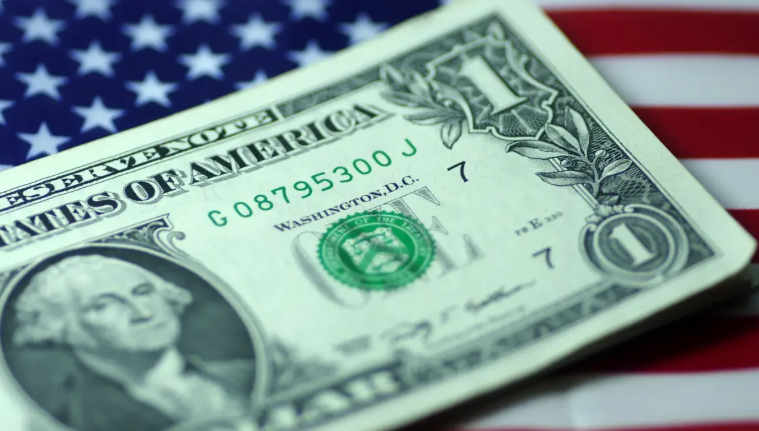Dollar Index Edges Higher
Advertisements
- July 28, 2025
In a significant shift within the realm of European monetary policy, Isabel Schnabel, a prominent member of the European Central Bank's Executive Board, recently made headlines by suggesting that a pause or cessation of the current rate-cutting trajectory may be necessary. This statement has piqued market interest, indicating that the ECB's approach to monetary policy might be on the brink of a major pivot. During her interview, Schnabel emphasized the importance of discussions at the upcoming March meeting regarding the possible removal of specific language in their policy statements that currently suggest the monetary policy is still restrictive to the Eurozone's economy. Schnabel pointedly remarked, "We can no longer say with confidence that our monetary policy remains restrictive." As a result, markets reacted swiftly to her remarks, leading traders to reduce their bets on further rate cuts from the ECB. Current projections now suggest that the ECB is expected to decrease rates by 72 basis points by 2025, down from 76 basis points before Schnabel's hawkish comments.
On another front, the Office for National Statistics in the UK has unveiled data indicating that the Consumer Price Index (CPI) in January rose by 3%, marking the highest level in ten months. This surge significantly exceeded economists' forecasts of a 2.8% increase and was higher than the previous month’s rate of 2.5%. Analysts have pinpointed the primary drivers of this inflationary surge as rising food prices, elevated airfare costs, and increases in private school tuition fees. Such robust inflation data is likely to reinforce the Bank of England's cautious approach towards potential rate reductions aimed at bolstering the economy. Notably, the BoE previously cut its benchmark interest rate to 4.5% earlier in February, representing the first reduction of the year. At that juncture, they anticipated inflation rates would climb to 3.7% by the third quarter, attributing this primarily to global energy costs and changes in regulated prices, while expressing expectations that domestic inflation pressures would ease, aiming to return inflation rates to a target of 2% by 2027. Ruth Gregory, Deputy Chief UK Economist at Capital Economics, noted that if the inflationary trend proves to be longer-lasting than initially predicted, it could lead to a slowdown in the pace of rate cuts or potentially reduce their magnitude.
Among the key data points to watch today are the UK’s CBI Industrial Order Expectations for February, the weekly unemployment claims in the US as of February 15, the Philadelphia Federal Reserve Manufacturing Index for February, and the final February Consumer Confidence Index for the Eurozone.
Turning to the US Dollar Index

Yesterday, the US Dollar Index exhibited a volatile upward trend in the forex market, ultimately closing slightly higher with trading stabilizing around 107.10. Recent uncertainties surrounding US tariff policies have sparked concerns about shifts in global trade dynamics. Amidst this complex backdrop, a surge in risk-aversion sentiment has emerged, favoring the dollar as a traditional safe-haven asset, which has provided substantial support for its value. Additionally, the release of hawkish meeting minutes from the Federal Reserve has significantly influenced market expectations. These minutes conveyed an optimistic outlook from the Fed regarding the economy, resulting in a notable cooling of rate-cut expectations. This shift, in turn, has heightened the appeal of dollar-denominated assets, prompting investors to accumulate more dollars, thus driving the index to new heights. Today, market participants will be closely monitoring the resistance level around 107.50; surpassing this threshold could extend the dollar’s bullish trend, while a drop below the significant support level near 106.50 might trigger concerns about a potential pullback.
Examining the Euro Dollar pair
The euro experienced a downward trend yesterday, concluding the day slightly lower with trading around 1.0430. Aside from ongoing profit-taking that continued to exert pressure on the exchange rate, the rise of the dollar index—supported by persistent risk-averse sentiment and the hawkish tone in the Fed's minutes—has also played a significant role in the euro's decline. However, hawkish comments from European Central Bank officials during the same timeframe have restricted the euro’s decline to some extent. Today, traders should keep an eye on the 1.0500 resistance level, with the 1.0350 mark serving as a key support level.
Lastly, regarding the British Pound to US Dollar exchange
The pound exhibited a downward trend against the dollar yesterday, closing the day slightly lower, trading around 1.2590. Previously, the pound had benefitted from improved economic data, experiencing a wave of appreciation which resulted in the accumulation of profit-taking. This current phenomenon, combined with the ongoing strength of the dollar index, has markedly pressured the pound. Furthermore, persistent risk-averse sentiment amid escalating geopolitical tensions and an uncertain economic outlook has led investors to seek safe-haven assets, with the dollar being the preferred choice. The Fed’s hawkish meeting minutes have dampened expectations for rate cuts, further bolstering the dollar’s allure and driving capital inflows into dollar-denominated assets while leaving the pound somewhat overshadowed in comparison. Nevertheless, the recently released CPI data indicating resilience within the UK economy could appropriately limit the pound's downward potential. Looking ahead, market participants should closely monitor the 1.2700 resistance level; a breakout there could signal a chance for recovery, while a fall below the critical support level of around 1.2500 could lead to increasing downward pressures for the pound.
Leave A Comment